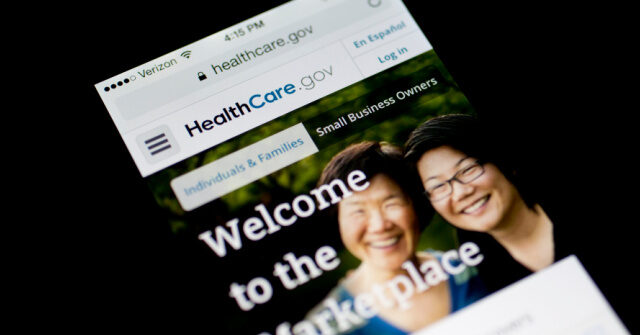The cost of a family health insurance plan has reached roughly $27,000 as lawmakers on both sides of the aisle have decried the high cost of health insurance.
The Kaiser Family Foundation (KFF), a nonpartisan healthcare nonprofit, found that the cost of health insurance for a family plan increased by six percent compared to the year before, which builds on two prior years of seven percent gains. This rate of increase outpaces the rate of inflation; economists believe this could stagnate employment and wage growth.
Gary Claxton, a senior vice president at KFF, said, “If healthcare costs go up faster than the economy in general, that means there’s less money left over to go to wages.”
As the burden of health insurance continues to weigh on businesses, many are pushing the cost onto employees.
Small businesses now often have to decide if they can afford to provide their employees health insurance at all. Some companies have instead opted to providing health-reimbursement accounts (HRAs) that workers could use to pay for their own premiums.
“If you are an employer who wants to take care of your employees, health insurance has become a real nemesis,” Kyra Hollowell Morris, a certified financial planner in South Carolina, said.
KFF wrote:
Over the past five years, the cumulative increase in family premiums (26%) and in what workers pay toward family premiums (23%) is similar to inflation (23.5%) and wage growth (28.6%).
Many employers may be bracing for higher costs next year, with insurers requesting double-digit increases in the small-group and individual markets on average, possibly foreshadowing big increases in the large-group markets as well. Employers continue to single out drug prices as a factor contributing to higher premiums in recent years.
Many large companies cited factors that led to increased premiums, including:
- Thirty-six percent say prescription drugs contributed a “great deal” to higher premiums
- Twenty-two percent say coverage for new prescription drugs
- Thirty percent said the prevalence of chronic disease
- Twenty-six percent higher utilization of services
- Twenty-two percent said hospital prices
KFF President and CEO Drew Altman said:
There is a quiet alarm bell going off. With GLP-1s, increases in hospital prices, tariffs and other factors, we expect employer premiums to rise more sharply next year,” KFF President and CEO Drew Altman said. “Employers have nothing new in their arsenal that can address most of the drivers of their cost increases, and that could well result in an increase in deductibles and other forms of employee cost sharing again, a strategy that neither employers nor employees like but companies resort to in a pinch to hold down premium increases.
Many healthcare experts take the ever increasing rise in health insurance premiums as an indictment of Obamacare, more formally known as the Affordable Care Act (ACA).
Brian Blase, a former senior Trump administration official during Trump’s first term in office and president of the Paragon Health Institute, wrote that premiums has drastically risen since the passage of the ACA.
Rep. Marjorie Taylor Greene (R-GA) wrote, “Health Insurance is a scam and is failing everyone while the insurance companies make huge profits. They get paid directly from the government, on the front end, for every person. Democrats created this problem in 2010, made it worse in 2021, and Republicans have never fixed it.”
Rep. Ro Khanna (D-CA) agreed with Greene’s recent criticisms of health insurance, although he came to a different conclusion.
“She said the cost-of-living insurance is terrible,” Khanna said last Sunday, referring to the Georgia conservative. “They’re ripping off the American people. Premiums have gone up. That’s why I believe we need single-payer health care with Medicare for all in this country. But we have to deal with the here and now.”
Even the Washington Post editorial board wrote:
The real problem is that the Affordable Care Act was never actually affordable. President Barack Obama’s signature achievement allowed people to buy insurance on marketplaces with subsidies based on their income. The architects of the program assumed that risk pools would be bigger than they turned out to be. As a result, policies cost more than expected.
To salvage the program, Democrats expanded subsidies to entice more people to buy plans. Many poor families wound up getting insurance for free, and the rolls grew: 24 million people now have coverage through the ACA exchanges. People earning more than 400 percent of the poverty line — about $129,000 for a family of four — would see their subsidies go away.
Read the full article here


